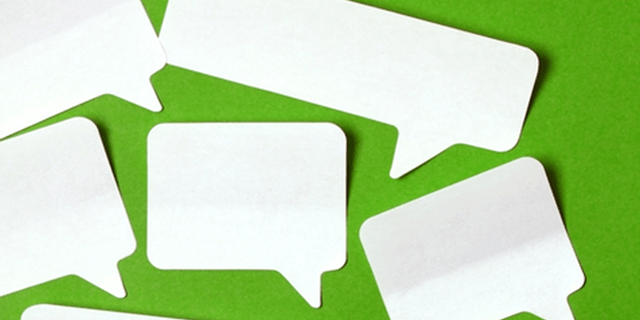In times of crisis, such as the current COVID-19 pandemic, customer service teams experience the stress of disruption perhaps more than any other department in your organization. On the forefront between anxious customers and strained business operations, many contact centers find themselves struggling to manage high contact volumes while still meeting customer expectations for exceptional service.
With dispersed service teams and an onslaught of new customer requests, contact centers need cost-effective channels that can help quickly triage these large volumes while also demonstrating that they are there for their customers. The expansion of asynchronous messaging capabilities has become a must-have for contact centers seeking to cut costs without cutting service.
What is the difference between asynchronous messaging and traditional synchronous messaging?
- Synchronous messaging is communication that happens concurrently for all involved parties, such as face-to-face communication or communication over channels like the phone, video conference, or a live chat. The nature of the interaction requires both parties to be simultaneously involved and paying attention at the same time.
- Asynchronous messaging is communication that happens sequentially, typically through an exchange of messages as participants read and respond to prior messages according to their own schedule and not in coordination with the schedules of other participants. This includes a variety of digital messaging channels such as email, Apple Business Chat, Facebook Messenger, WhatsApp, Twitter DM, and SMS. In contrast to synchronous messaging, there isn’t an expectation for real-time response.
Expanding support across asynchronous, digital messaging channels has become crucial for businesses looking to adapt to changing customer preferences and needs.
With the many pressures that customers are currently facing, now more than ever, service interactions need to be easy. On top of agents working tirelessly to manage a surge in requests, customers’ schedules are in flux. When juggling both work and personal responsibilities, many customers are not looking to talk on the phone and face potentially long wait times. To support changing customer needs while also offloading some of the volume agents may be facing, it’s time to step up asynchronous messaging along with other service initiatives.
Expanding asynchronous messaging benefits customer service in a number of ways:
- It gives your customers the ability to connect 24/7
Offering customer service through asynchronous, digital channels empowers customers to reach out to your business with their inquiries and issues in ways that fit around their schedule. It’s more important than ever to be able to meet each customer where they are (even if your agents are off-hours). No customer wants to be prompted with a message like, “Sorry, all of our agents (or even chatbots!) are offline/busy right now.” By de-coupling the customer service interaction from the requirement that the customer and agent need be available in real time, your customer is able to access service when it’s convenient for them. Even if the response to a customer’s inquiry requires processing at a later time, asynchronous messaging gives a customer the ability to initiate or reply 24/7 to keep the conversation going.
- It gives your customers freedom of movement
Synchronous communication requires that the customer is tethered to their device. We’ve all gone through experiences where we’ve initiated a live chat only to have it time out and have to start all over again. This is not only twice the frustration for customers, it’s twice the cost for your business. By allowing your customer to communicate with your company via asynchronous channels that leverage case management and intelligent automation, customers can continue the dialogue while on the go from whichever channels make the most sense – without losing any context or having to repeat themselves.
- It improves agent productivity
Advances in asynchronous messaging technology, such as an email bot that leverages the power of Natural Language Processing (NLP) and AI to extract message sentiment, assign work to cases, and sometimes even send replies, can eliminate some of the repetitive, labor-intensive tasks that may be slowing your agents down. Rather than spending time triaging emails and multiple chat histories, agents have some additional breathing room and can focus on solving customers’ issues faster.
Unify digital messaging for a brilliant customer experience
Personalized customer service across every journey
Asynchronous communication has become essential in times of disruption
Augmenting digital customer service with intelligent asynchronous messaging technology can help your team quickly extend your service capabilities to address today’s operational challenges. It also helps alleviate the anxiety felt by your consumer base while improving your front-end communications capabilities to be better prepared for a future where customer preferences will continue to be focused around flexibility and agility.
Your agents will benefit from these efficiency gains. And most importantly, adding asynchronous messaging to your overall customer service strategy further demonstrates how your company values your customers’ time and communication preferences – showing much-needed empathy in times of disruption.
Learn more:
- Discover how digital messaging helps you connect with customers, drive consistency, and scale quickly.
- See a demo of Pega’s email bot in action.
- Download the eBook, “An introduction to Pega Unified Messaging,” and learn how to enhance customer engagement with a digital messaging platform.
- Read the whitepaper, “Achieving digital customer service transformation,” to learn how to quickly adopt a more customer-centric approach to CX.
- Watch replays from this year’s PegaWorld iNspire to see demos of the latest digital customer engagement technology and learn how some of the world’s most recognizable brands are delivering seamless customer service.

